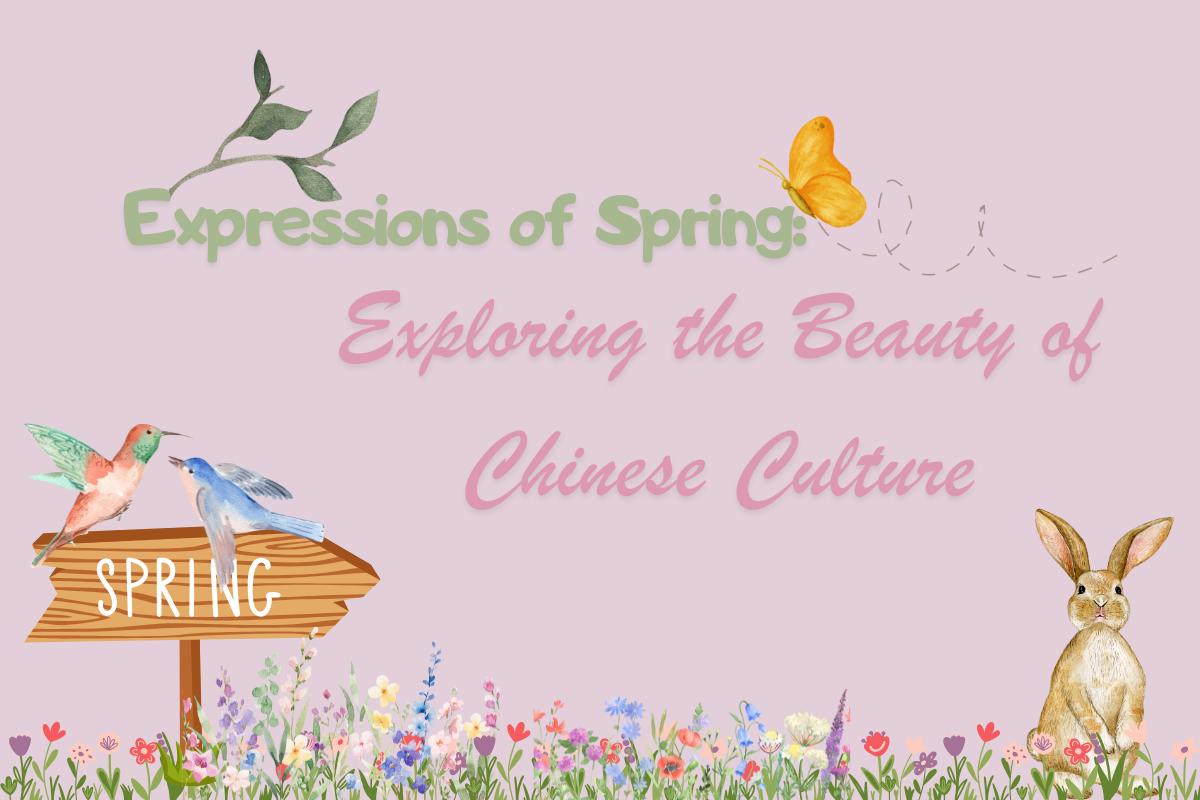Expressions of Spring: Exploring the Beauty of Chinese Culture
Spring is a season full of vitality and vigor, leaving a deep cultural impression in China. Throughout history, many idioms have revolved around the theme of spring, not only describing the scenery and weather, but also containing profound life philosophies.
Idioms Describing the Spring Scenery
春暖花开 (chūn nuǎn huā kāi)
- Meaning:
Spring brings warm weather and blooming flowers, depicting the beautiful spring scenery. Often used to describe the vibrant scenes of spring days or metaphorically when things are going well. - Example:
During this season of blossoming flowers, let's go on an outing and experience the charm of nature together.
在这春暖花开的季节,我们一起去郊外踏青,感受大自然的魅力。
zài zhè chūn nuǎn huā kāi de jì jié, wǒ men yī qǐ qù jiāo wài tà qīng, gǎn shòu dà zì rán de mèi lì.
花红柳绿 (huā hóng liǔ lǜ)
- Meaning:
Describes the bright spring scenery or vividly colorful objects. Can be used to depict the scenery of spring or to describe brightly colored things. - Example:
In the park, with flowers blooming and willows lush, it's like a beautiful painting.
公园里花红柳绿,宛如一幅美丽的画卷。
Gōng yuán lǐ huā hóng liǔ lǜ, wǎn rú yī fú měi lì de huà juàn.
春光明媚 (chūn guāng míng mèi)
- Meaning:
Describes the picturesque and lovely characteristics of spring scenery and weather. Often used to describe the weather and scenery of spring. - Example:
The bright spring days, with a gentle breeze, truly bring a refreshing feeling.
春光明媚,微风拂面,真是让人心旷神怡。
Chūn guāng míng mèi, wēi fēng fú miàn, zhēn shi ràng rén xīn kuàng shén yí.
草长莺飞 (cǎo zhǎng yīng fēi)
- Meaning:
Describes the lively scenes of late spring in the Jiangnan region. Often used to convey the lively and bustling scenes of spring. - Example:
In the bright March of early spring, with grass growing and birds flying, the air is filled with the fragrance of spring everywhere.
阳春三月,草长莺飞,到处都充满了春天的气息。
Yáng chūn sān yuè, cǎo zhǎng yīng fēi, dào chù dōu chōng mǎn le chūn tiān de qì xī.
春华秋实 (chūn huá qiū shí)
- Meaning:
Flowers bloom in spring, fruits ripen in autumn. Metaphorically refers to one's literary talent and character. Nowadays, it is also used to signify achieving results in learning. Often used to metaphorically describe achievements in studying or work. - Example:
Only by working hard in spring can one reap the full rewards in autumn.
只有在春天辛勤耕耘,才能在秋天收获满满的春华秋实。
Zhǐ yǒu zài chūn tiān xīn qín gēng yún, cái néng zài qiū tiān shōu huò mǎn mǎn de chūn huá qiū shí.
Idioms Describing the Spring Weather
春寒料峭 (chūn hán liào qiào)
- Meaning:
Describes the coldness of early spring. Used to describe the weather in early spring. - For example:
Although spring has begun, the chilly weather still requires wearing extra layers when going out.
虽然已经立春,但春寒料峭,出门仍需多穿些衣服。
Suī rán yǐ jīng lì chūn, dàn chūn hán liào qiào, chū mén réng xū duō chuān xiē yī fu.
春和景明 (chūn hé jǐng míng)
- Meaning:
Describes the warm and bright weather of spring. Often used to depict the weather and scenery of spring. - Example:
On warm and sunny days in spring, let's go mountain climbing together and enjoy the beautiful scenery.
在春和景明的日子里,我们一起去爬山,欣赏美丽的风景。
Zài chūn hé jǐng míng de rì zi lǐ, wǒmen yī qǐ qù pá shān, xīn shǎng měi lì de fēng jǐng.
Idioms with Spring Symbolism
万象更新 (wàn xiàng gēng xīn)
- Meaning:
Everything has changed, presenting a new look. Often used to describe the scene of the new spring. Can be used to depict the revitalization of all things in spring, or metaphorically describe new situations or a fresh start. - Example:
At the beginning of the New Year, with all things renewed, we should also meet new challenges with a fresh outlook.
新年伊始,万象更新,我们也要以崭新的面貌迎接新的挑战。
Xīn nián yī shǐ, wàn xiàng gēng xīn, wǒ men yě yào yǐ zhǎn xīn de miàn mào yíng jiē xīn de tiǎo zhàn.
春兰秋菊 (chūn lán qiū jú)
- Meaning:
Orchids in spring, chrysanthemums in autumn. Metaphorically implies each has its own strengths and charms. Often used to describe people or things with their unique strengths. - Example:
Both of them have their own strengths, just like spring orchids and autumn chrysanthemums, each with its own style.
他们两人各有特长,真是春兰秋菊,各具风采。
Tā men liǎng rén gè yǒu tè cháng, zhēn shi chūn lán qiū jú, gè jù fēng cǎi.
枯木逢春 (kū mù féng chūn)
- Meaning:
Dry trees come to life again in spring. Generally used metaphorically to describe someone or something regaining vitality. - Example:
After the reform of this company, like dead wood blooming in spring, it has shown new vitality.
这家企业改革后,如枯木逢春,焕发出新的活力。
Zhè jiā qǐ yè gǎi gé hòu, rú kū mù féng chūn, huàn fā chū xīn de huó lì.
Do these idioms about spring make you feel the charm of the season? Do they give you a taste of the fascination of Chinese culture? When you learn to use these idioms, your Chinese will become more authentic, and you'll better appreciate the charm of the language. Come and experience more of the impact of Chinese culture!
